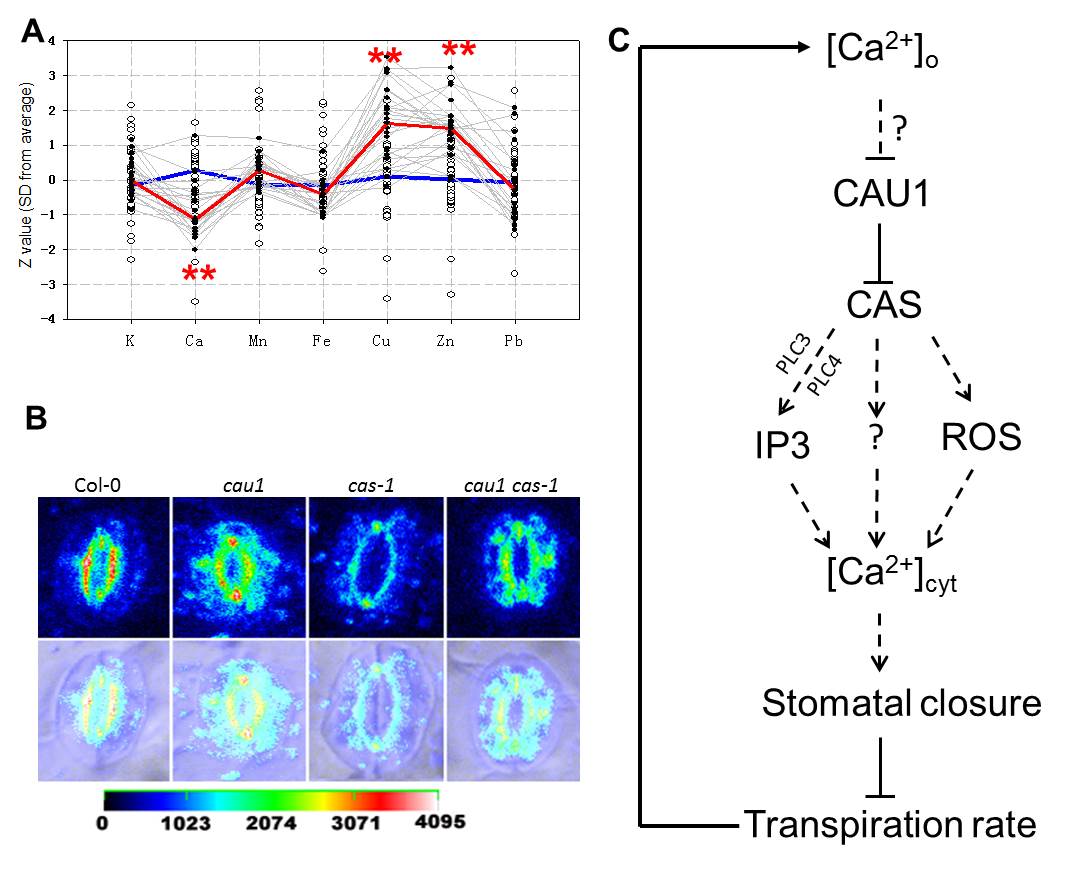New Insights into The Interaction Between Extracellular Ca2+ Sensing and Drought Tolerance
Long-distance transport of calcium (Ca2+), one of the essential macronutrients and signal molecules, from roots to shoots via transpiration, would substantially affect the extracellular calcium [Ca2+]o level, thus leading to guard cell movements and a dynamic regulation of transpiration rate and water homeostasis in higher plants. This process is of pivotal importance to plant adaption to the environment, though the regulatory mechanisms remain elusive. The Ionomic research group led by Dr. Gong Jiming from Institute of Plant Physiology and Ecology, Shanghai Institutes for Biological Sciences provides novel insights about this process.
In a massive screen of metal accumulation mutants, a Ca2+ underaccumulation mutant cau1 was identified. cau1 mutant plants display increased drought tolerance and stomatal closure. A mutation in CAU1 significantly increased the expression level of CAS, a putative [Ca2+]o sensor which synchronizes extracellular calcium variation and cytosolic calcium oscillation. Functional disruption of CAS abolished the enhanced drought tolerance and stomatal [Ca2+]o signaling in cau1. Further research revealed that CAU1 encodes the H4R3sme2-type histone methylase PRMT5/SKB1, and it functions to methylate the CAS chromatin and hence its expression level though binding to the CAS promoter. Upon exposure to elevated [Ca2+]o, the protein levels of CAU1 decreased and less CAU1 bound to the CAS promoter, leading to decreased H4R3sme2 methylation, and consequent derepression of the expression of CAS to mediate stomatal closure and drought tolerance.
This research was published online in The Plant Cell on August 13, entitled “Arabidopsis histone methylase CAU1/PRMT5/SKB1 acts as an epigenetic suppressor of the calcium signaling gene CAS to mediate stomatal closure in response to extracellular calcium”. This work was carried out by Dr. Fu Yanlei and colleagues, under the supervision of Prof. Gong Jiming, and supported by grants from the National Science Foundation of China, Chinese Academy of Sciences and Shanghai Institutes for Biological Sciences.
A calcium underaccumulation mutant displays altered extracellular calcium signaling in guard cells(Image by GONG Jiming’s group)
